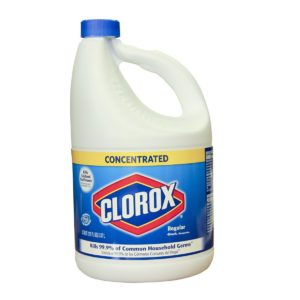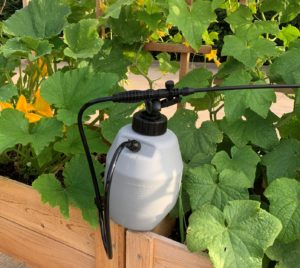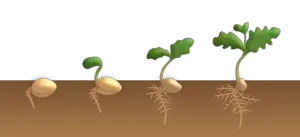One of the best ways to ensure that your garden gets off to a good start is to clean and disinfect all the seed trays, pots, containers, and other related items before the season begins. Some may wonder if this is necessary, considering that these items are just going to get dirty again. But it is not the dirt per se that is the problem but what is hiding in the dirt from the previous season that can wreak havoc on your garden.
Fungi, viruses, and bacteria, as well as tiny pests and their eggs, may be lingering in the soil or residue that clings to pots and garden tools. Even if you empty the dirt and rinse the surfaces, microscopic pathogens and insect eggs can remain. These tiny intruders can easily multiply and negatively affect seeds, seedlings, and transplants, possibly killing them before they have a chance to mature. Or the insect eggs and pathogens may lay in wait for the right conditions to proliferate, affecting plants when they are more mature. Disinfecting seed trays, containers, tools, and other garden-related items before you plant will remove these threats. With just a small investment of your time, you can give your garden a better chance of thriving. (You can learn more about how to effectively disinfect garden tools and related items in this helpful article.)
In this post, we will talk about how to clean and disinfect items to protect your garden from these unseen enemies.

This article contains affiliate links. If you make a purchase using one of these links, I will receive a very small commission at no additional cost to you, and it will help me maintain this website. Rest assured, I only recommend products I actually like!
How to Clean and Disinfect Garden Containers in 3 Easy Steps
Step 1: Remove dirt and debris with a stiff brush. Rinse item well with clean water.
Step 2: Disinfect the item using either white vinegar or bleach.
White Vinegar – In a large container, add clean water and white vinegar in a 1:1 ratio. You can also add several drops of a mild dish soap like Dr. Bonner’s if you would like. Soak the items in the mixture for several minutes, and then use a stiff-bristled brush to thoroughly scrub each item. Rinse well.
This mixture should be fine for routine cleaning. If, however, the container housed a diseased plant, you should consider using the bleach solution instead. This goes for seed pots and trays as well since harmful microorganisms like Fusarium wilt and Verticillium wilt can affect seedlings.

Bleach – Fill a large container with a bleach solution made of 1 part bleach and 9 parts clean water. Submerge pots, containers, and trays in the mixture and let them soak up to 30 minutes in order to kill harmful pathogens and insect eggs. If you are not able to fully submerge the item because of its size, simply rotate it until all surfaces have been submerged.
Rinse the items well and then rinse them again to ensure that all of the bleach has been removed. If you are disinfecting terra cotta pots, you will need to submerge them in clean water for several minutes after rinsing because terra cotta is porous. Soaking will help ensure that the bleach solution has been purged from the terra cotta.
Remember that bleach, even a drop, can stain fabric. Also, wear rubber gloves and eye protection as bleach is caustic. Do not dispose of bleach water in the garden as it can harm beneficial organisms in the soil.
What is the White Stuff?
You may notice a white residue or substance on the inside or outside of your containers, even after they have been washed and sanitized. The residue is most likely a result of minerals from fertilizers and hard water that have built up in the soil and then deposited on the container’s surface. Although it may be a bit unsightly, this is a common occurrence, and the buildup is not harmful to your plants. Sometimes you can remove the residue by using a simple tool, like a table knife or butter knife, to gently scrape it off.
Step 3: Dry the items thoroughly. If possible, allow all items to dry in the sun, as this can further help kill any lingering organisms. Do not store items when they are wet, as the damp surfaces can become a breeding ground for more organisms. You can stack containers once they are completely dry.
You may be able to get by for a while without implementing these sanitation steps, but sooner or later, poor garden hygiene will catch up with you. Thankfully, it does not take much effort to prepare containers, pots, seed trays, and tools for a successful year. (If you would like to learn more about how to choose the right containers for growing vegetables, check out this helpful article!)
Thank you for reading this article! If you found it helpful, please consider sharing it with others via email and social media!



